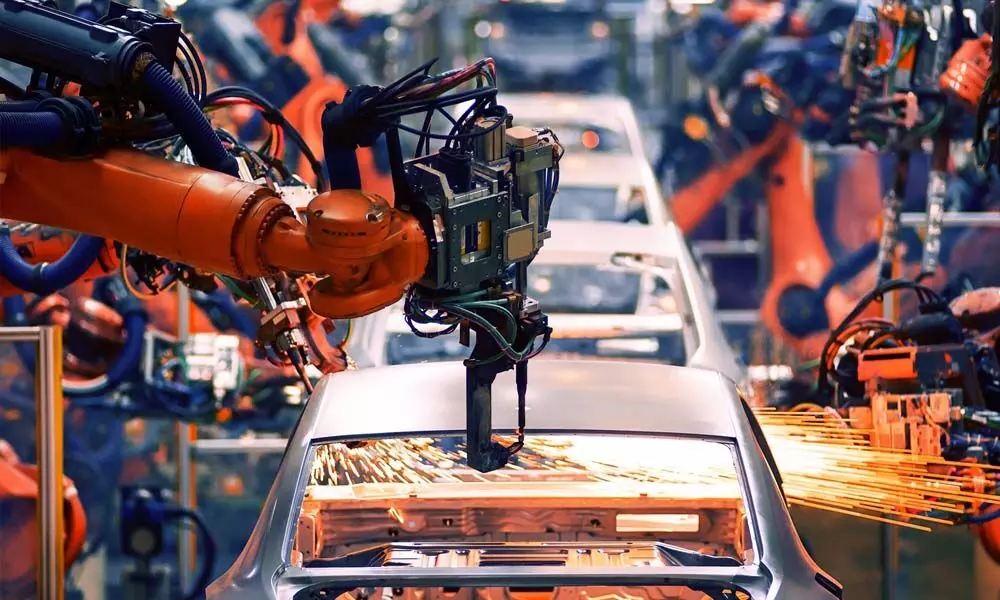India's global manufacturing risk rank improves, but investor woes continue
It should also be recognized that the investment environment in this country has a long way to go to match other countries like China to become global manufacturing hub
image for illustrative purpose

India seems to have made a giant leap by overtaking the US to become the second most attractive manufacturing destination in the world. The ranking is based on an annual survey finalized by real estate agency, Cushman and Wakefield. It is no surprise that China tops the list while the US is now in third position followed by Canada. The upward movement is a welcome development at a time when the Indian economy is struggling to recover from the second Covid wave, but reactions must be tempered by the fact that the entire global eco-system is weathering a storm due to the pandemic. It should also be recognized that the investment environment in this country has a long way to go to match other countries like China. It is amazing that investors are still flocking to the Asian giant despite it having been the source of the virus currently engulfing the globe.
One of the reasons given for India having risen from third to second place in the 2021 Global Manufacturing Risk Index is that entities seeking to relocate from China are bound to find a productive haven here. This is especially so in sectors like pharmaceuticals, chemicals and engineering where the country already has an established base. At the same time, the need for reforms in land and labour laws is underlined in the survey as one of the issues that could affect its rise as a global manufacturing hub. On the other hand, cost competitiveness remains a plus point for this country and is surely one of the major reasons for its improved ranking. The very same survey places India at a far lower ranking for economic and political risks. It is as low as the third quartile for this category. Similarly, in the case of 'bounce back' ratings or the ability to restart its manufacturing sector, it has been put in the fourth quartile. In other words, there remain serious concerns over risks to investment here as well as the ability to revive after setbacks that can lead to closures of manufacturing units.
It does not take a survey to highlight the fact that investors here still face huge obstacles in the process of setting up manufacturing facilities. Bureaucracy and red tape remains the biggest worry despite liberalization policies initiated several decades ago. The number of approvals needed to start a business venture remains daunting even now. Even a small business could need up to 900 types of compliance and filing clearances. There are always bold declarations of single window clearances, but these are largely just a mirage. Unless the government takes some bold steps to cut red tape, India will always be lagging behind other countries in terms of providing an easy investing environment. Another issue of vital concern is the stability and continuity of policies relating business and the economy. On this score, the government has taken a major step forward by introducing the recent legislation to withdraw the retrospective tax legislation passed in 2012 by the UPA government. This has, in one stroke, provided comfort to investors that there will be stability and transparency in the policy environment. While taxation of corporate transactions will be governed by existing rules, these will no longer be applicable to past transactions which were carried out with the presumption of a different taxation regime. The recent spate of legal cases and international arbitrations had sparked fears among global corporates over the rigidity of the Indian authorities in settling long pending tax disputes.
A third concern is labour laws and regulations which have created rigidities in dealing with the workforce. Some issues were dealt with last year by giving greater flexibility to state governments to alter labour laws. At the same time, this is an issue that needs to be dealt with sensitively and empathy given the lack of social safety nets for workers in this country. This was brought home dramatically during the initial lockdown last year as migrant workers who had lost livelihoods walked back to their villages. Allowing states to extend working hours inordinately cannot be described as a step in the right direction even if such working conditions are found acceptable in other countries including China. As for the proposed new labour code, it needs to be scrutinized carefully before implementation in order to ensure that workers rights are given due priority. It is in the interests of investors to ensure that productivity levels remain high by maintaining adequate wage and salary standards.
Thus improved ranking in a global manufacturing index is certainly a plus point for India, but does not alter the reality on the ground for potential investors. Risks abound in this country for anyone trying to set up manufacturing facilities. It is disconcerting for those trying to implement projects that the multifarious approvals process is not confined to the central government but to state agencies and even, in many cases, municipal authorities. It is at these levels that the problems multiply to such an extent that many are deterred at the very outset. It is high time the government makes a concerted effort to resolve the bureaucratic issues that crop up at every stage for investors. No doubt some work has been done in this direction but much more is needed if the country is to attract the levels of investment needed to revive the moribund economy.

